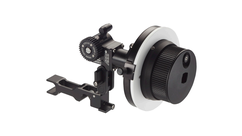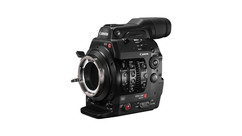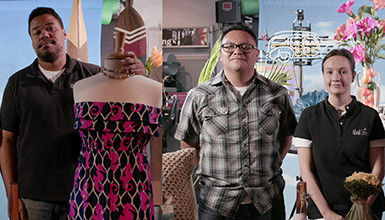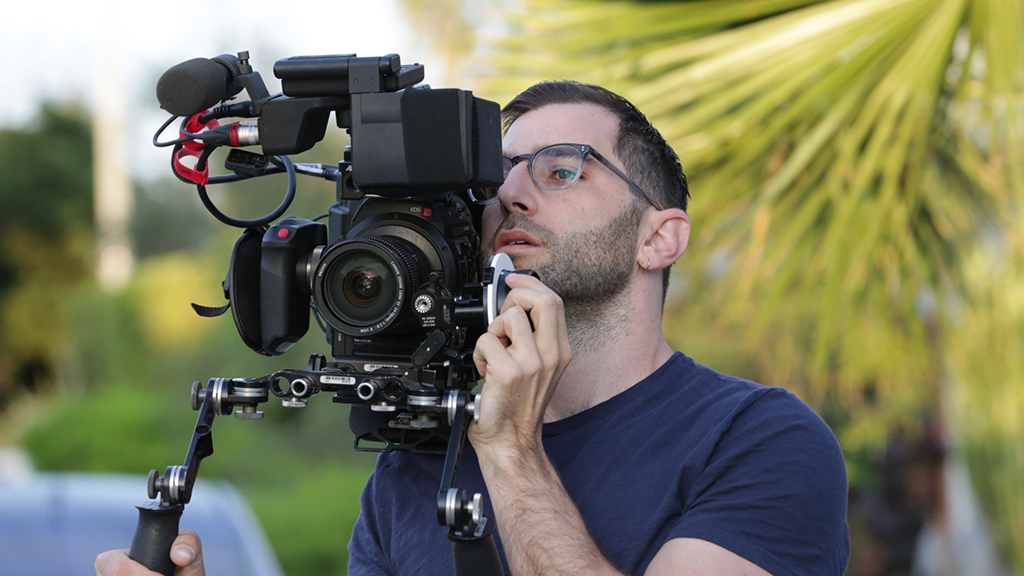
Can you tell us a bit about yourself and your previous work?
Jonathan Barenboim: I began my career as a cinematographer shooting commercials and branded content for companies such as Reebok, Doritos, Nike, and Ford Motor Company. Gradually, DP-ing commercials led to directing, where I found that I was most passionate about using compelling imagery to tell human-interest stories. Therefore, much of my commercial work has a documentary style approach coupled with more narrative techniques, such as the use of camera stabilizers and dramatic lighting. While I gravitate towards commercial work that centers on sports and athletes, my ultimate goal is to direct feature films.
How did you get involved with this project?
JB: The executive producers of content for WorkingNation approached me about directing short documentaries for a new series called The Table. WorkingNation is a new organization whose primary focus centers on the critical issues surrounding growing unemployment in the U.S. and the rapidly shrinking middle class. The Table is a series in which local leaders, educators, corporate heads, and innovators sit at a roundtable to discuss the problems our economy faces today and highlight possible solutions. My role was to make short documentaries that the guests around the table would watch at the top of each episode. The goal of these short pieces was to spark and fuel interesting discussion and debate.
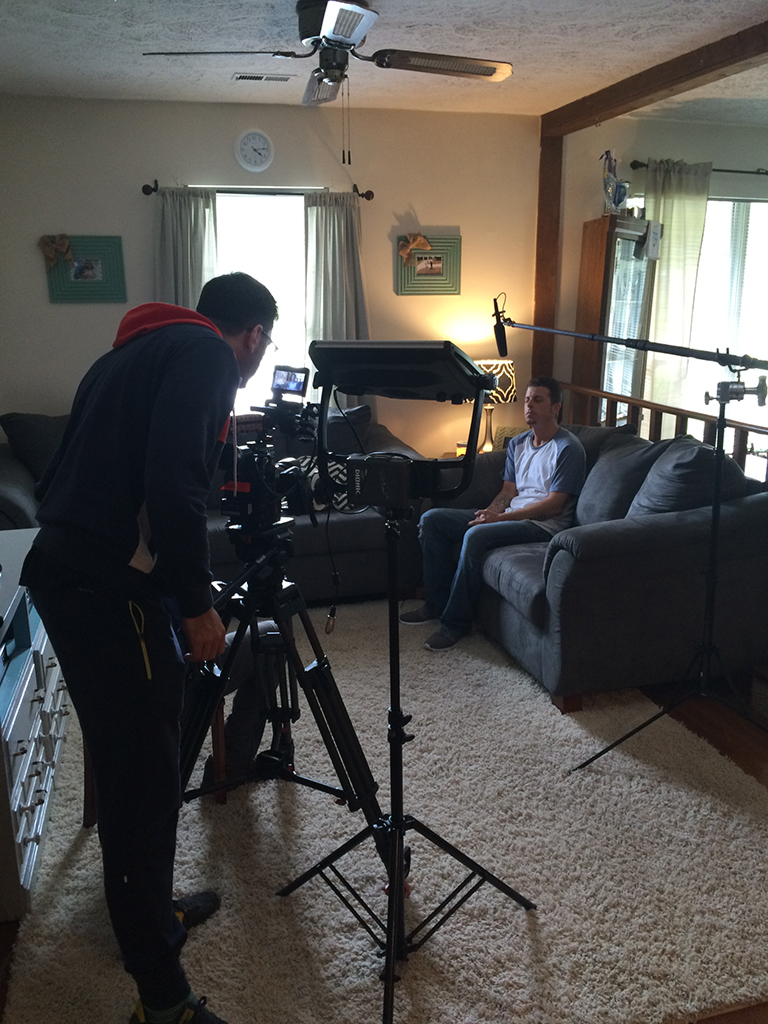
What type of shooting locations did you have and what kind of lighting situations were involved?
JB: The first piece I did was about two factory workers in Indianapolis who lost their jobs because the company was moving its plant to Mexico. There was very little time to prep, and I had no idea the type of locations I would be in. All I knew was I would have a short window of time with each person, and I needed to be prepared for anything. My instinct was to bring as little gear as possible, so I brought one Litepanel LED 1x1, and that was it in terms of lighting sources. In the end, we did the interviews inside each subject's home, and I was able to use natural window light as my key source. I tried my best to compose the interviews so that nothing would be too blown out, and used LED as fill light. Aside from the interviews, we shot a lot of day exteriors, so our biggest challenges were cloudy days where one minute the sun was out and the other it was overcast.
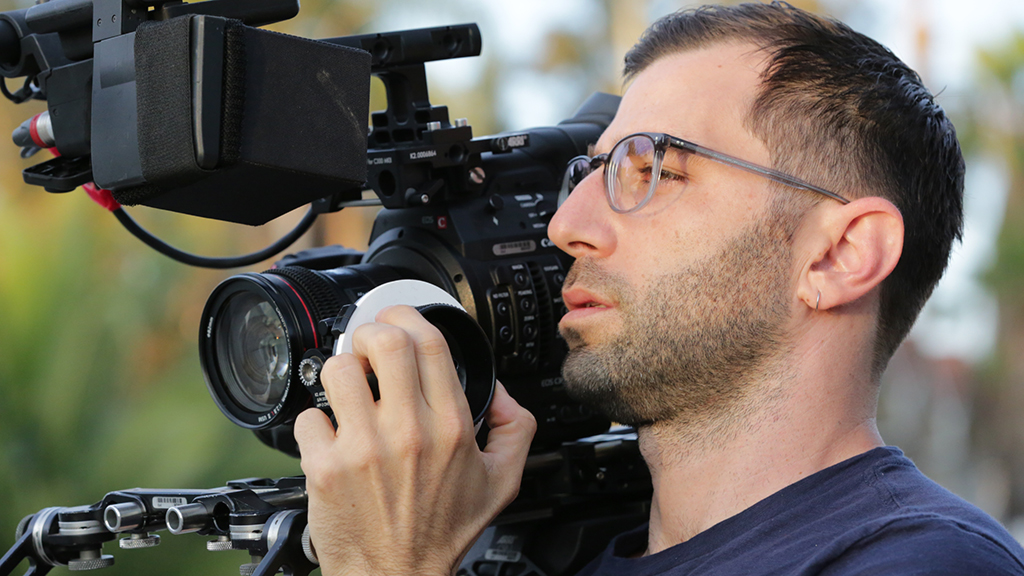
What was your shooting schedule like?
JB: Our shooting schedule was sporadic and dependent on the schedules of our subjects. There were instances where we had less than 24 hours to coordinate with AbelCine, my 1st AC Nathan Meade, and our sound mixer Jake White, to prep, pack, travel and shoot. We kept our camera package and lighting gear to a minimum to make it easier to prepare on a day's notice. Once we were on the ground and shooting, it was very much run-and-gun. Having a small crew made it easier to adapt to ever-changing plans and schedules.
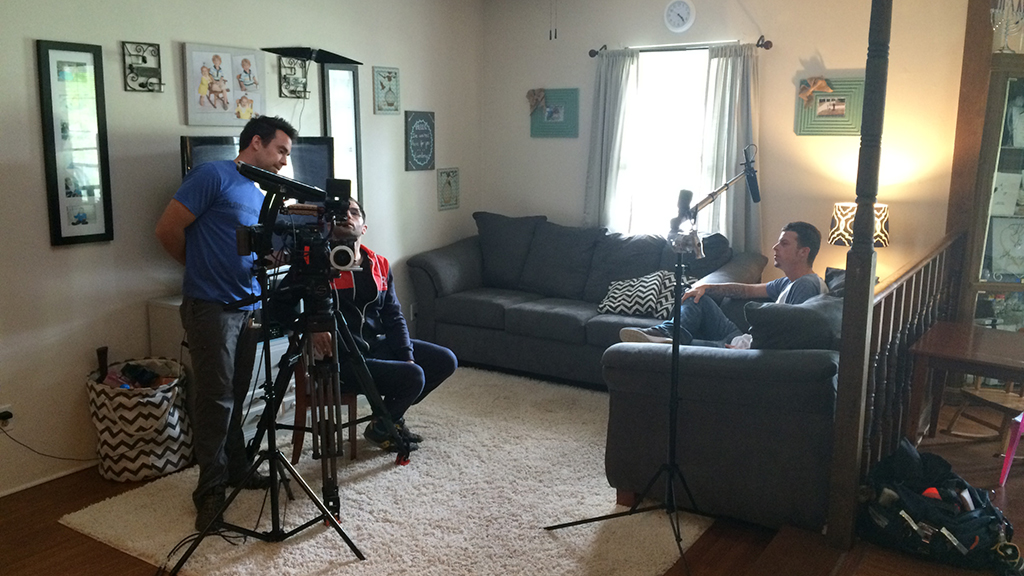
Did you experience challenges with the locations or shooting conditions? If so, did your choice of camera make these challenges easier?
JB: I knew that our biggest challenges would be the unknown environments we would encounter and not having enough time with our subjects. Therefore, I needed a camera that would be compact, easy to use, and would allow me the most flexibility in any lighting scenario. It was also very important that the camera have high-speed capabilities at 2K or greater resolution for the vignettes we were creating. The Canon C300 Mark II checked of all those boxes for me. I had a lot of experience with its predecessor, and I did my research on this new version. What I liked about this version was that it offered higher resolution image capture, improved dynamic range, and HD high-speed capabilities while maintaining a very similar body and weight to the Mark I. 
Why did you choose the C300 Mark II? Have you used it on any projects in the past, and are you planning to use it on any future projects?
JB: I chose the Canon C300 Mark II for a variety of reasons. Primarily, I needed a lightweight, compact camera that could both capture 4K internally and high-speed in HD without taking up a lot of memory card space. We didn't have time throughout our days to stop and download footage, so it was great to have 128 GB CFast 2.0 cards that could hold up to 40 minutes of 4K, 10-bit 4:2:2 footage. High-speed capabilities were also a priority for me when considering a camera package for this shoot. The reason being that I wanted to juxtapose the severity of each subject's story with footage of their everyday lives from an almost surreal perspective, and I felt that capturing these vignettes at 60 fps would help me achieve that. Ultimately, I needed a camera that could handle high-speed in 2K or greater, and allow me to switch between regular and high speed quickly.
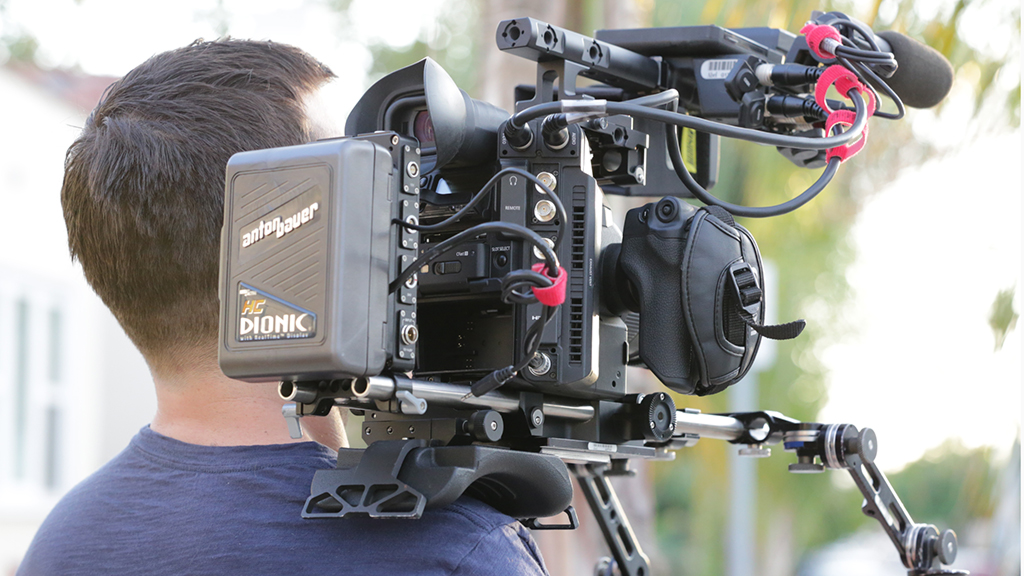
Can you give us some insight into how you accessorized or rigged the camera during shooting?
JB: Simplicity was the key to my camera setup. I needed something lightweight enough that I could carry for 45 minutes to an hour at a time for several days in a row. I also needed a setup that would allow me to pull my own focus at times and, at others, let my 1st AC jump in and take control. Therefore, we settled on a rig that used Canon EF mount zooms, a 5" TVLogic on-board monitor for my 1st AC, an ARRI MFF-2, and pistol grips with an ARRI CSP-1 shoulder pad that was easy to dismount when we needed to go down to sticks.
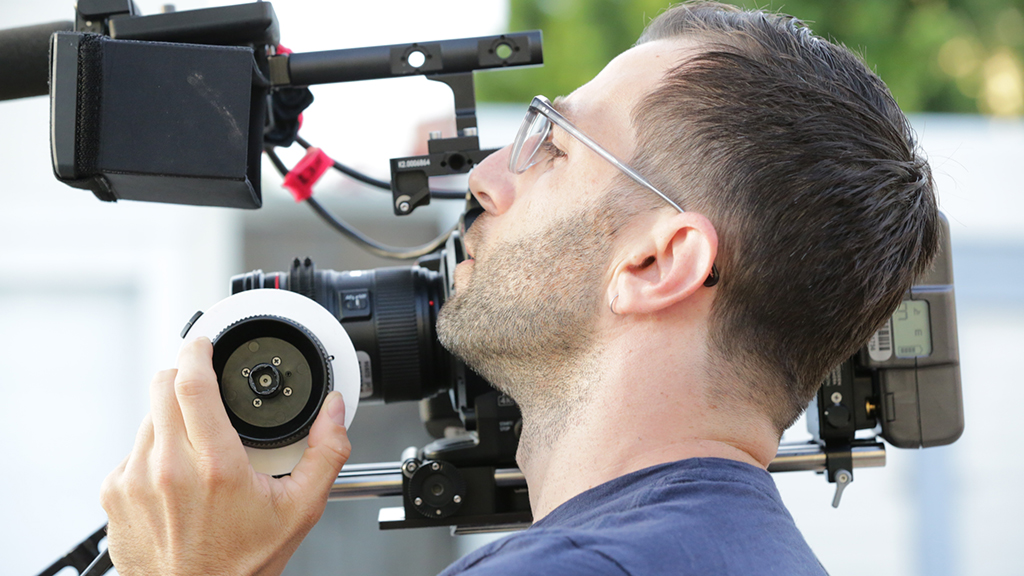
What lenses did you use and why did you choose them?
JB: We used three Canon still zoom lenses. They were the 16-35mm f/2.8L ii, 24-70mm f/2.8L ii, and the 70-200mm f/2.8L ii. Early on in the process I made the decision to go with this set of lenses because they were the best options given our budget. Plus, they are super light and relatively fast. The most important thing for me was to have a set of lenses that covered a wide range of focal lengths without weighing me down, especially since most of the shoot was filmed handheld documentary-style. Over the years, I have found this set of lenses to be the best for this specific type of work.
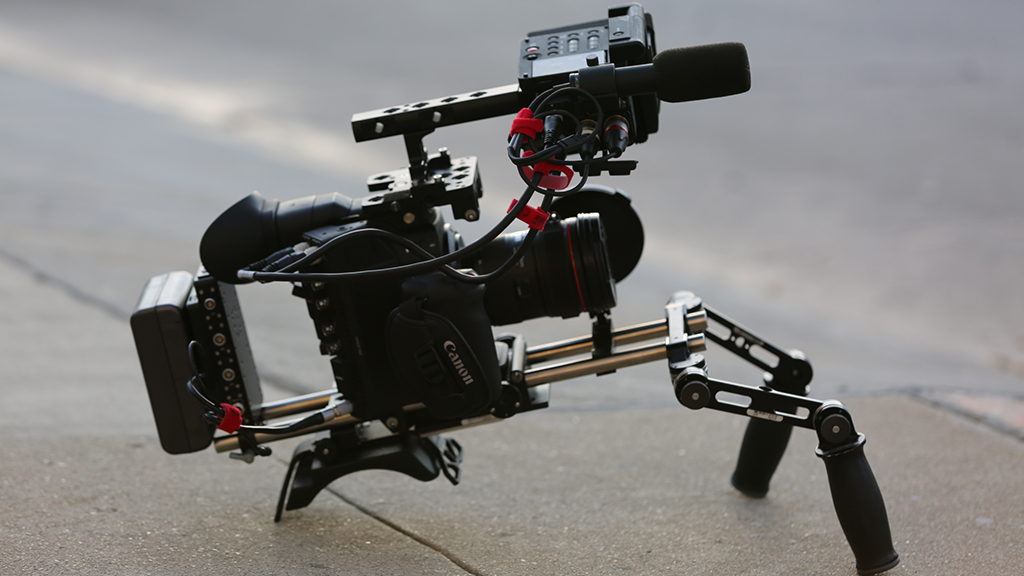
What advice would you give someone who is thinking about using the C300 Mark II on their next project?
JB: I highly recommend the Canon C300 Mark II, especially if you're on a shoot with a tight budget where you will have little to no control of the surroundings that you will be in. One piece of advice I would give for this setup would be to add the Zacuto grip relocator so that you can have quicker and easier control of the camera functions at your fingertips.
How did AbelCine get involved in this project?
JB: I have been working with Brandon Zachary at AbelCine Los Angeles for a number of years for projects of all different sizes. Even before getting the green light on The Table, I was in communication with AbelCine to figure out what the best camera package option would be. I wanted to make sure that the camera package I chose was both available and within budget for this particular show. Being able to price out the necessary gear and share that with the producers was invaluable because it allowed them to understand how I would be able to deliver the caliber of project I pitched. When it comes to my work, I'm always at odds with myself because I work as both a director and a DP. My director side always wants to put the majority of the resources in front of the camera, but my DP side always wants the best camera and lenses the budget can afford. Since I began renting from AbelCine, they have helped me figure out what equipment I need to achieve the visual goals of each project while both helping me stay within the budget and making sure I'm shooting with great gear. More importantly, I think what makes working with AbelCine unique is that they are large-scale camera rental house with a down-to-earth vibe.
(Responses have been lightly edited for space and clarity. All photos courtesy of Jonathan Barenboim.)
About Jonathan Barenboim
Jonathan Barenboim's penchant for storytelling has taken him around the world directing and DP'ing commercials for some of today's most well-known brands. Some of his most recent credits include Nike Women's #BetterForIt spot, and Sony PlayStation's Friendly Competition holiday ad. Jonathan has been recognized as one of SHOOT Magazine's 2015 New Directors, and has won a 2015 Silver Clio Sports Award for his Reebok Road To Killington campaign. The commercial he shot for Doritos, Pug Attack, was the winner of the Crash The Super Bowl Contest and was the top rated 2011 Super Bowl spot as measured by USA Today's Ad Meter. Additionally, Jonathan's short film, The Lepidoctor was nominated for a 2012 Student Academy Award, won the Golden Starfish Award at the 2012 Hampton's International Film Festival, and took top honors at the 2012 Cannes Film Festival in the Emerging Filmmaker Showcase.
Jonathan is a graduate of USC's School of Cinematic Arts where he graduated with an M.F.A. in film production. To see more of Jonathan's work, visit jonathanbarenboim.com











